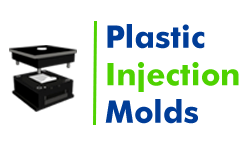- Mould Manufacturer
- Tooling
- Moulding Die
- Plastic Molding
- Plastic Injection Molding
- Injection Molding
- Nylon Injection Molding
- Injection Moulding
- Custom Injection Molding
- Injection Mould
- Injection Mouldings Process Manufacturers
- Medical Injection Molding
- Polycarbonate Injection Moulding
- Rapid Injection Moulding
- Injection Molds
- Injection Molding Cost
- Injection Molding Suppliers
- Injection Moldings
- HDPE Molding
- Metal Injection Molding
- Rubber Injection Molding
- Mold Designing
- Prototyping
- Automotive Injection Molding
- Blow Molding
- 3D Printing
Medical 3D Printing: Leading The Way
Additive manufacturing in metal and plastic is an excellent option for making models quickly, especially when supporting the medical applications. The flexibility of design and the availability of the cheapest 3D printing service make it one of the chosen options for the development of customized parts.
Here is why medical 3D printing is making the healthcare services soak the benefits fully.
Complexity of operations
The 3D printing technique helps in training the doctors to be and preparing them for actual operations. It also makes the printed models more realistic and emulates the actual human parts, making the operational process more effective and accurate.
High-end technology
With 3D printing in medical field, the doctors to be may engage in good practice using the 3D print of the organs, which is more precise and accurate. Obtaining training on 3D printed parts enhances the skills of doctors and assists them during the medical treatments.
Reducing the cost and waiting time
With medical printing, you can get lab and medical equipment with 3D prints of the plastic parts of the equipment. Therefore the healthcare industry may reduce the cost and the time spent for acquiring new devices from the suppliers. Moreover, the manufacturing process and applications become easier. The experts can access the equipment quickly and facilitate 3D-printed medical equipment the areas that are difficult to access.
Proper care
With cheap 3D printing service in the field of medicine, the health-care facilities may get low-cost prosthetics for people and places where they are needed. Therefore, medical solutions become more cost-effective for those places and remote areas where people cannot afford prosthetics. You can 3D print any equipment in the hard to access areas.
Customized parts
The medical printing companies can depart from the conventional methods of making prosthetics and use the advanced printers different form, colors, sizes, and designs. Therefore, 3D printing today become customized and makes the availability of prosthetics more widely available at lower rates.
Prototyping and mapping
The 3D scanning technology can be used to make accurate and detailed models of human bones or organs ad considered as physical prototypes using 3D printer. With such detailed models, the doctors find it easier to study and diagnose the patients’ condition without going invasive treatments or major surgeries.
High-end technology
With affordable 3D printing services, the experts can create metal or plastic parts that use a wide variety of substrates. Quote naturally, the final and finished parts can be designed using various features to be optimized for the application. While some parts may be used one-time, the rest may be considered as joint or bone replacements.
If you are looking forward to availing 3D-printed medical parts, you can connet with us and order the products when you need.
Transforming Healthcare: The Role of 3D Printing Companies in Medical Device Manufacturing
Advancements in Healthcare through 3D Printing Companies
3d printing companies have revolutionized the healthcare industry by leveraging innovative technologies to produce customized and precise medical devices. These companies specialize in utilizing 3D printing technologies to manufacture a wide range of medical devices, offering personalized solutions that cater to the unique needs of patients and healthcare professionals
Accessible and Localized Solutions with 3D Printing Companies Near Me
The availability of 3d printing companies near me has made healthcare solutions more accessible and convenient. Localized 3D printing companies offer proximity and direct collaboration, allowing healthcare providers to work closely with experts throughout the device development process. This localized approach enables faster turnaround times, reduced transportation costs, and better communication, resulting in efficient and tailored medical devices that address specific patient requirements.
Examples of 3D Printed Medical Devices
The impact of 3D printing in healthcare is evident through numerous examples of 3D printed medical devices. Patient-specific implants, such as cranial and orthopedic implants, can be custom-designed and fabricated using examples of 3d printed medical devices to fit the unique anatomy of individuals. Prosthetic limbs are another area where 3D printing has made significant strides, providing cost-effective and customizable solutions that enhance mobility and quality of life for amputees. Additionally, 3D printing enables the creation of surgical tools, anatomical models, and bioengineered tissues, empowering surgeons with accurate preoperative planning and aiding in medical training and research.
Advantages and Future Prospects
3D printing offers several advantages in the manufacturing of medical devices. It allows for intricate and complex designs, personalized customization, and rapid prototyping, reducing time-to-market and enhancing patient outcomes. Furthermore, 3D printing facilitates the production of devices with improved functionality and ergonomics, leading to enhanced patient comfort and better treatment outcomes. As technology continues to evolve, 3D printing companies are expected to play an even more significant role in advancing healthcare by enabling the production of more complex and sophisticated medical devices.
3D printing companies have made remarkable contributions to the healthcare industry by producing personalized and precise medical devices. The availability of localized 3D printing services has improved accessibility and collaboration between healthcare providers and manufacturers. Examples of 3D printed medical devices, including patient-specific implants, prosthetics, surgical tools, and anatomical models, showcase the transformative potential of this technology.
FAQ
- Q1. What Are The Applications Of 3D Printing In Medical?
3D printing in medicine has various applications. It's used to create custom implants, prosthetics, and anatomical models for surgical planning and training. It also enables personalized medicine through the fabrication of tailored medical devices and drug delivery systems. These advancements improve patient care and treatment outcomes.
- Q2. What Are The Challenges Of Medical 3D Printing?
Challenges of medical 3D printing include regulatory compliance, ensuring biocompatibility of materials, and quality control. Design complexity and sterilization also pose challenges. Additionally, high costs and limited accessibility to advanced equipment hinder widespread adoption. Addressing these challenges is crucial for safe and effective implementation of 3D printing in healthcare.
- Q3. What Are The Facts About 3D Printing In The Medical Field?
3D printing lets doctors use special printers to create real-life models of bones, organs, and even prosthetics. These help doctors plan surgeries better, and make custom body parts that fit perfectly. This technology is still growing, but it's already changing how medicine works!







.webp)

